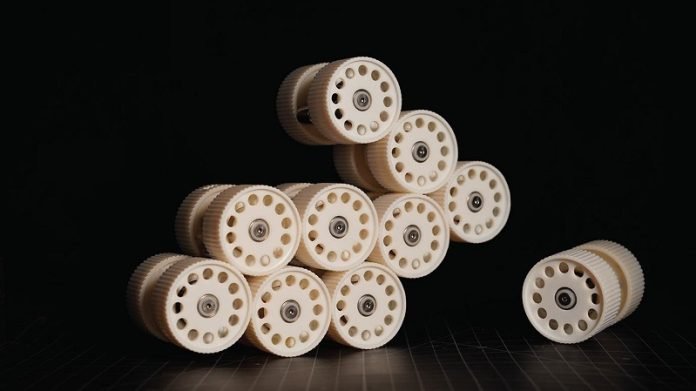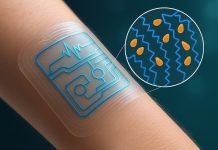
In the world of robotics, a groundbreaking invention is paving the way for future technologies that can interact with humans more safely and adapt to their environment just like living creatures do.
This new type of robot, developed by a team of physicists from the University of Chicago and the Illinois Institute of Technology, is called the “Granulobot.”
It’s inspired by the natural world, where groups of animals like fish, bees, and birds move together in harmony, changing shapes fluidly without a single leader.
The Granulobot stands out because it can act both as a solid object and flow like a liquid.
This ability makes it highly adaptable to various situations, including navigating through tight spaces or rough terrains, which could be incredibly useful for tasks such as search and rescue missions.
The robot is made up of many small, cylinder-shaped pieces, each equipped with magnets and a motor, allowing them to stick together and move in unison.
This innovative robot blurs the lines between different robotics fields, merging soft, modular, and swarm robotics into one.
The concept of soft robotics is essential when robots and humans need to interact closely, ensuring that the machines can be safe companions or helpers. The flexibility of these robots to change shape could enable them to perform tasks in places that are hard to reach or navigate.
The principle that allows the Granulobot to switch between being rigid and soft is known as jamming.
This phenomenon occurs when materials, like grains of coffee in a vacuum-sealed bag, are packed so tightly together they stop flowing.
The Granulobot uses this concept to transition from a liquid-like state to a solid form, enabling it to adapt its shape for various functions.
The development team envisions that in the future, these robots could be made in different sizes, from very small to much larger, depending on the need.
The physical principles behind the Granulobot’s design are versatile, meaning they could potentially operate in environments ranging from underwater to outer space.
Beyond the practical applications in robotics, this project is also a way for physicists to explore new concepts about the nature of matter itself.
They are investigating how energy transfer and self-organization can turn a system from being just a material into an autonomous robot or vice versa. This research challenges and expands the traditional boundaries between matter and machinery.
The team is excited about the potential of the Granulobot and is working on making this technology commercially available.
Their work represents a significant step forward in creating robots that can safely interact with humans and adapt to their surroundings, much like the natural swarms that inspired them.



